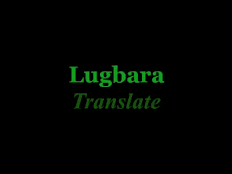When you see children dancing calypso in Kampala suburbs, do you think of the two island Republic of Trinidad and Tobago? This lively music with catchy rhythms and unmistakable style is becoming popular in Uganda again ever since its first introduction in the 1970s. According to the book Calypso Calaloo, the name Calypso can refer to either ‘any song that after about 1898 was sung at Carnival time in Trinidad, either in the streets by revelers or in staged performances by semiprofessional or professional singers.” Calypso may have been inspired by the historical African storyteller tradition that was brought to Trinidad by African slaves. Subsequently, cherished elements of African song, dance and drumming, along with French, Hispanic, English and other ethnic influences formed a matrix from which calypso eventually emerged. Calypso is respected for its biting wit and word picture style. Early calypso singers in Trinidad and Tobago had humour as their forte. People came to their tents principally to be entertained, to hear rumours and confirm events they had heard about. The upper classes, especially, came to hear what the lower classes were doing, while the governor and his entourage came to see how high or low their political ratings were.
In modern Uganda, it is believed that Mariam Ndagire reintroduced the dance in the musically liberal country but His Excellency Bobi Wine, the self styled Ghetto President popularized it in his PAM Award- winning Song of the Year 2006 entitled ‘Bada’. So the next time you are at your favourite joint eating ‘rollex’, chips, chicken and ‘kikomando’, or sipping malwa, busheera and cappuccino, enjoy the lively catchy sound and dance that has captured the imagination of young and old Ugandans alike.
GODisgreat! Welcome to my Atelier [Design Workspace]! Pay or donate via +256-781-345712 (Edward); awa'difo! From Busoga to Buganda to Lugbaraland and beyond, Art is my life. #JESUSistheWay...
JESUS Christ Quotes

JESUS is the Way...
The Y-Corner (411)

Either you go left or go right...
Self Portrait

An inking of myself in Twenty23...
Maracha View

Rock my world...
Elekitoro Komisoni Ongu [EC Race] 2021
![Elekitoro Komisoni Ongu [EC Race] 2021](https://blogger.googleusercontent.com/img/b/R29vZ2xl/AVvXsEjAo2xbJR5ARnWe_U1As57tS-D9aSdj6KR1hY01W8yFB1zNRGcVVQy9lDHv6mZFOBYCWrohl9bjA538bXyUrERcUNs9HVPvuR1_-jXCuI-npTMsKM4SxPul3mEZG8NDky0RotfGX5XqawQ/)
Ma Prezidenti ni ini, te eri ma basi woro yelo [Lugbara Translate: My President is black, but his bus is all yellow]...
Peace & Prudence (2016 Logo Revamp)

Drew this Council Emblem in anticipation of Arua's transition from municipality to city which happened four years later; it was emblazoned on the West face of the 2021 Arua Central Market...
Tumusiime Family (Portrait)

When you want Ugatoons for your loved ones, just reach out to Mr. Aiko (+256-781-345712)...
Time Shield

Mashup summary of lessons learnt from Agriculture, Architecture and Art. There is nothing under the sun that cannot be discussed in 100 words...
Xnthi

This beauty inspired me to restudy my mother tongue becoz I couldn't believe the infinitely-sweet fluency with which she spoke it during her preteens (6-11 years old)...
Synthetic Artificial Lugbara Translation

Ojapi: Transcribe, translate, chat (+256-781-345712)...
Filipino (2020 Portrait)

The colour mix is truly lovely...
Engato Store (2020 Logo Design)

I made this logo for (my 2nd cousin) Edwin Paratra's shoe-selling hustle...
Elita + Onya (2021 Portrait)

A couple residing in Lusaka, Zambia...
Nda azini Isu
Blog Archive
-
▼
2008
(106)
-
▼
February
(24)
- Why Ugandan fans hate Adebayor...
- My LOVE AFFAIR with JINJA
- Let's Meet in Kampala 2007
- 2007 KADS Backdrop Trivia...
- Promoting Evidence-based Leadership
- 'oneway' to Heaven
- Do you want to stay Alive?
- Hotel Arua (Lyrics)
- The Best Thing in Life
- Always Remember your Lecturers and Tutors
- UCIFA Day Enhances Professionalism
- UgaWood's Film Evolution
- Rendezvous with …OMAR KASSIM
- TOURISM: Uganda-Gifted By Stature
- Does Port Mombasa have adequate capacity?
- Calypso-Trinidad’s Folk Music rocks Uganda
- My 15 Minutes of Fame
- 2007 UTL Business Forum
- Marketers Nite Out (April 2007)
- African Woman Magazine
- Why is Africa backward?
- Gaagaa’s Gender Revolution
- Focussed Madness (2 Articles in 1)
- Aiko's First Day on the BlogSite
-
▼
February
(24)
Aiko TV

Designs & Portraits...
Most Viewed Posts
-
The Motion for URA’s inaugural Open Minds’ Forum at Hotel Africana’s Nile Conference Hall in January 2008 was: “It is the Sole Responsibilit...
-
‘DO you own a small or medium business’? That could mean less or just more than 5 employees. If yes, then you should have attended the three...
-
(Eric [in a skyblue shirt] chats with a lady) BEWITCHINGLY RYTHMIC ASKED why his Art pieces focus mainly on women, he replied that he wa...
-
Ugatoons One of the Most Complicated and Painstaking Visual Arts is 3D Animation, a Twin Sister to CGI used in Movies. Before the Turn of t...
-
Uganda is blessed with many inspired Church designs from East to West, North to South eg St. Andrew's Church of Uganda Jinja, St. Andrew...
-
She Wore A Green Attire (SWAGA) by Aiko... GOD is great, first and foremost! In Chinese language (Putonghua), a Cartoon is called "Manh...
-
James Nyakuni, one of the richest people in Uganda, is known for the fleet of white GaaGaa buses that ply the Kampala - West Nile route. He ...
-
I spent the first Decade of my Life (January 1984 to May 1995) mainly in Jinja and got to hear about a lucky Lady from around there who went...
-
Lugbara AI I was born in Jinja (1984) and grew up in KLA City (since 1995), so I learnt most of my first Lugbara vocabulary through my ears....





